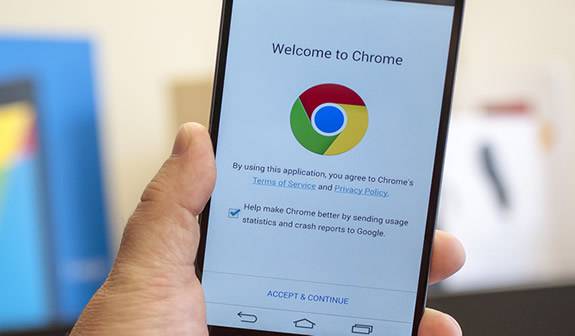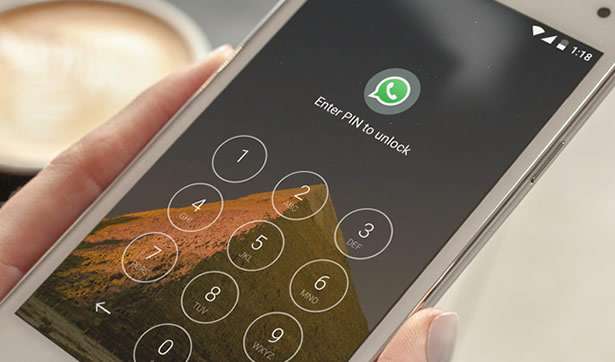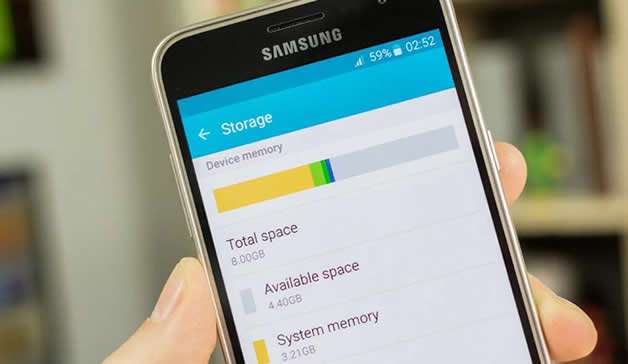As a tech blogger, I understand the importance of keeping our online accounts secure by using strong and unique passwords. One effective way to manage our passwords is by using a password manager app. When it comes to finding the best free password manager for Android, one app that stands out is LastPass. Here’s why:
1. Cross-platform compatibility: LastPass is available not only for Android but also for iOS, Windows, Mac, and other platforms. This allows you to seamlessly sync your passwords across all your devices, ensuring easy access and peace of mind.
2. User-friendly interface: LastPass offers a clean and intuitive design, making it easy for users to navigate the app and manage their passwords efficiently. The app provides a smooth and streamlined user experience, even for beginners.
3. Robust security features: LastPass takes security seriously and employs strong encryption algorithms to protect your sensitive data. It stores your passwords in a secure vault that only you can access with a master password or biometric authentication. Additionally, LastPass also offers two-factor authentication for an extra layer of security.
4. Autofill functionality: LastPass can automatically fill in your login credentials and forms in apps and websites, saving you the hassle of typing them manually every time. This saves time and enhances convenience while still maintaining the security of your passwords.
5. Password generator: Creating strong and unique passwords can be challenging, but LastPass simplifies this by providing a password generator feature. It can generate secure passwords and even offer to replace weak passwords you have saved.
6. Free version with essential features: LastPass offers a free version that provides enough features for most average users. It includes password storage, autofill, and cross-device syncing. However, LastPass also offers a premium subscription that unlocks additional features like advanced multi-factor authentication and secure file storage.
Overall, LastPass is a top choice for the best free password manager for Android due to its cross-platform compatibility, user-friendly interface, robust security, autofill functionality, and the availability of a free version with essential features. It’s crucial to prioritize the security and management of your passwords to safeguard your online accounts and personal information.
Video Tutorial:What is the best free Android password manager?
Does Android have a built in password manager?
Yes, Android does have a built-in password manager. The password manager is an integral part of the Google Play Services, which comes pre-installed on all Android devices. Here’s how you can use it:
1. Go to the settings menu on your Android device.
2. Look for the “Google” settings and tap on it.
3. Scroll down and find the “Smart Lock” option.
4. Tap on “Smart Lock” and it will prompt you to enter your device password or PIN for security purposes.
5. Once you have provided the necessary authentication, you will see options for various Smart Lock features, including the password manager.
6. Tap on the “Saved passwords” option to view all the passwords saved on your device.
7. You can also use the “Auto-fill with Google” option to automatically fill in login credentials on websites and apps.
By default, the password manager stores your passwords securely and syncs them across your devices if you are signed in with your Google account. Additionally, you have the option to use a password manager app from a third-party developer if you prefer more advanced features and customization options.
It’s worth mentioning that the steps and features may vary slightly depending on the version of Android and the device manufacturer’s customizations, but the overall functionality remains the same.
Is Google password manager better than LastPass?
As a tech blogger, analyzing and comparing different password managers is crucial to help users make informed decisions. Evaluating the strengths and weaknesses of Google Password Manager and LastPass can assist users in selecting the most suitable option. Here are some aspects to consider:
1. Integration with platforms and browsers:
– Google Password Manager: It seamlessly integrates with Google Chrome, making it the default choice for Android users and Chromebook owners. However, it may not provide the same level of integration with other browsers or platforms.
– LastPass: It supports multiple platforms and browsers, including Chrome, Firefox, Safari, Edge, and Opera. This makes it a more versatile option for users who prefer different devices and browsers.
2. Features and functionalities:
– Google Password Manager: It offers basic password management features such as secure password storage, autofill, and password generation. Google’s focus is more on convenience and simplicity rather than advanced features.
– LastPass: It provides a wide range of features, including password sharing, emergency access, secure digital wallet, multi-factor authentication, and password auditing. LastPass caters to users who seek advanced functionalities and enhanced security measures.
3. Security:
– Google Password Manager: Google has robust security measures in place, including encryption and two-factor authentication. Additionally, if you use other Google services, it benefits from their security infrastructure. However, some users might be concerned about Google’s data collection practices.
– LastPass: LastPass employs strong encryption algorithms and hashing techniques to protect user data. It has a zero-knowledge policy, meaning your passwords are only accessible to you. LastPass has a consistent track record of prioritizing security and regularly updates its security protocols.
4. Pricing model:
– Google Password Manager: It is included as a free feature within Google Accounts, making it accessible to all Google users at no additional cost. This simplicity and affordability are appealing to users who don’t want to invest in a separate password manager.
– LastPass: It offers both free and premium plans. The premium plan provides additional features like multi-device syncing, emergency access, and priority customer support. Users seeking advanced functionalities may opt for the premium plan.
In conclusion, both Google Password Manager and LastPass have their advantages and disadvantages. Google Password Manager is suitable for users who appreciate seamless integration with Google services and prefer simplicity. On the other hand, LastPass offers a wider range of features, enhanced security measures, and cross-platform compatibility. Users with specific requirements and advanced security needs might find LastPass a more suitable option. Ultimately, the choice depends on individual preferences and priorities in terms of features, security, and platforms.
Where is password manager in Android phone?
Password managers on Android phones can be accessed and managed through the phone’s settings or through dedicated password manager apps. Here are the steps to find the password manager on an Android phone:
1. Go to the Settings app on your Android phone. You can usually find the Settings app in your app drawer or by swiping down from the top of the screen and tapping on the gear icon.
2. In the Settings menu, look for the section related to security and privacy. The exact location of this section may vary depending on the Android version and manufacturer’s customizations.
3. Within the security and privacy section, locate and tap on the option labeled “Passwords” or “Credential Manager.” This option may also be found under “Lock screen & security” or “Biometrics and security” depending on your Android version.
4. Once you tap on the password manager option, you should see a list of saved passwords or an option to manage passwords. Some Android phones come with a built-in password manager, while others may require you to install a separate password manager app from the Google Play Store.
5. If you have a built-in password manager, you can view, edit, or delete saved passwords directly from this menu. If not, you can tap on the “Install” or “Get” button to download a password manager app from the Google Play Store. Popular password manager apps for Android include LastPass, 1Password, and Dashlane.
6. After installing a password manager app, you’ll often need to set it up with a master password or sign in with your existing account. Once set up, the password manager app will securely store your passwords and autofill them when needed.
Remember to choose a strong master password for your password manager and regularly update it to ensure the security of your stored passwords. Additionally, consider enabling biometric authentication, such as fingerprint or face unlock, if your Android phone supports it, to add an extra layer of security to your password manager.
By following these steps, you should be able to locate and access the password manager on your Android phone, whether it’s a built-in feature or a separate app.
What is the best app to save passwords Android?
When it comes to choosing the best app to save passwords on Android, there are several factors to consider. Here are some recommendations and the reasons behind them:
1. LastPass: LastPass has been a popular password manager for years. It offers a user-friendly interface, strong encryption, and cross-platform support. It syncs your passwords across devices, stores them securely, and even generates complex passwords for you. LastPass also supports biometric authentication, making it easy to access your passwords with fingerprint or face recognition.
2. Dashlane: Dashlane is another top choice for Android users. It provides a seamless experience with its sleek and intuitive interface. Dashlane boasts advanced security features like encrypted data storage, two-factor authentication, and the ability to change multiple passwords with just a few clicks. It also includes a built-in VPN for browsing securely on public networks.
3. KeePassDroid: If you prefer an open-source option, KeePassDroid is worth considering. It allows you to manage your passwords using the widely recognized KeePass format. You can store your passwords locally on your device or sync them across multiple devices using third-party cloud storage services. KeePassDroid offers strong encryption and a simple, no-frills interface.
4. Bitwarden: Bitwarden is gaining popularity as an open-source, cloud-based password manager. It offers easy setup and synchronization across devices, including Android, iOS, and desktop platforms. With Bitwarden, you can store an unlimited number of passwords, securely share them with others, and access them with fingerprint or face unlock. It also integrates with popular web browsers for seamless autofill functionality.
5. 1Password: Known for its polished interface and robust security features, 1Password is a reliable option for password management on Android. It offers secure storage for passwords, credit card information, and other sensitive data. Additionally, 1Password supports cross-platform compatibility, intuitive organization of passwords using tags and folders, as well as the ability to share passwords securely with friends or family members.
Ultimately, the best app to save passwords on Android depends on your specific needs and preferences. Consider factors such as ease of use, security features, cross-platform compatibility, and integration with other apps or browsers. Take some time to evaluate these options, read user reviews, and choose the one that aligns best with your requirements.
How do I find my Password Manager on my Android phone?
Finding the Password Manager on an Android phone can vary depending on the device and the specific version of Android. However, here are the general steps you can follow to locate the Password Manager on most Android devices:
1. Open the Settings app: Locate the Settings app on your Android phone. It is usually represented by a gear icon and can typically be found on the home screen or in the app drawer.
2. Look for “Google” or “Accounts”: In the Settings menu, scroll down and search for options related to Google or Accounts. This may vary slightly depending on the device manufacturer’s customizations.
3. Tap on “Google” or “Accounts”: Select the Google or Accounts option from the Settings menu. It may be labeled differently based on your device.
4. Choose “Security” or “Security & Privacy”: Once you enter the Google or Accounts settings, look for options related to security or privacy. Tap on it to proceed.
5. Locate “Password Manager” or “Autofill”: Within the security or privacy settings, you should find an option called “Password Manager” or “Autofill.” Tap on it to access the respective settings.
6. Access your saved passwords: Once you enter the Password Manager or Autofill settings, you will likely see a list of saved passwords or a vault. You can view, edit, or delete your saved passwords within this section.
Keep in mind that the exact placement of these settings may vary slightly depending on the Android version and the device manufacturer’s custom UI. In case you’re unable to locate the Password Manager following these steps, consider consulting the device’s user manual or performing an internet search specific to your device model and Android version.







